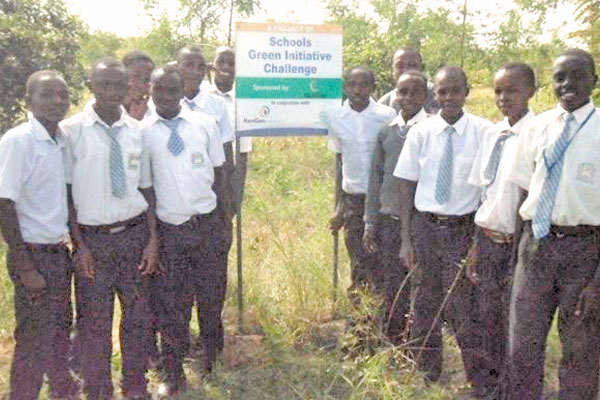Planting life into kids’ hearts
Green is a colour of growth and rebirth. It renews and restores depleted energy. One reliable source of green is that of trees and some schools in Kitui and Embu; arid and semi-arid areas, are testament to how growing of trees in their schools has made an indelible positive difference to their environment.
The trees have not only added to the beauty of the school, but also created a more conducive environment to learn. The schools, which are beneficiaries of Green Initiative Challenge (GIC) under the KenGen Foundation Environment Pillar boasts of woodlots with more than 13,000 trees.
In November 2013, KenGen Foundation took up the model of the GIC from the Ministry of Education and Kenya Forestry Services. As a way of inculcating a culture of afforestation and conservation of natural resources in schools, KenGen Foundation donated 24,000 tree seedlings to schools in Embu and Kitui counties in the first phase of the project, which have transformed the initially brown topography into green.
“The GIC has not only transformed the schools, but also the community. People in the area now view the schools as little havens because their homes are still dry and even want to take their goats to graze there since the grass cover has grown significantly,” says Anthony Igecha, a senior programmes officer at KenGen Foundation, on how the trees have improved the aesthetics of the schools.

Cassia Siamea, a unique species of tree that grows fast, is one of the two species of trees introduced to the schools. The tree also serves as a source of fuel that conserves the environment, since its branches can be cut for fuel without necessarily felling the trees. Cognizant of the fact that these areas are dry and keeping trees alive would be a daunting task, Kengen Foundation designed the project as a challenge.
As a way of motivating the schools to participate, the foundation awards schools with the highest survival rate and those that exhibit a high level of innovation in caring for the trees with cash awards, trips for the students and water tanks.
The success of the first phase, through a tree survival rate of 55 per cent, acted as a great motivational factor to upscale the project, leading to the launch of Phase two in November 2015. Phase two has now extended to Kitui County adding up to 120 schools participating in the project from the three counties.
The schools not only benefit from commercial trees, but also fruit seedlings from which they earn money through the sale of fruits. According to Igecha, the communities have embraced the programme, making the foundation consider involving the communities in tree planting by introducing family woodlots in their homes.
According to a World Bank report, Kenya’s forest cover as at 2015 was 7.8 per cent, making the country one of the lowest ranked. Igecha urges more corporates to engage in initiatives that will help boost the countries’ forest cover and mitigate the adverse effects of climate change.
To him nothing is more inspiring than seeing an area entirely transformed. “These children will become environment ambassadors in future, by investing in them through inculcating environmental awareness, we are sure to have a bright one,” says Igecha.

